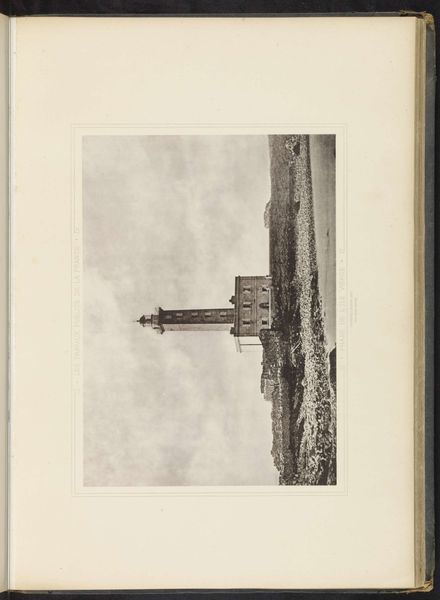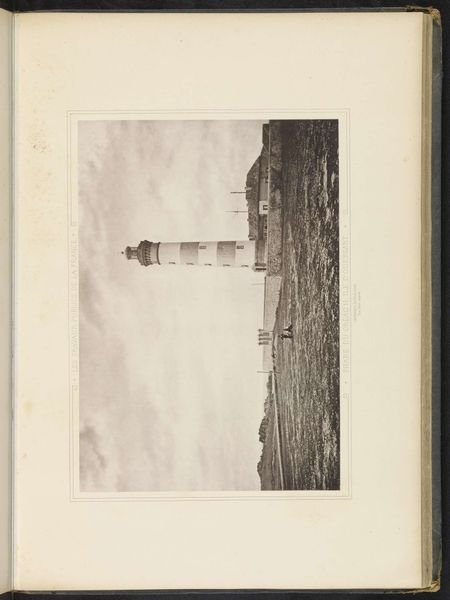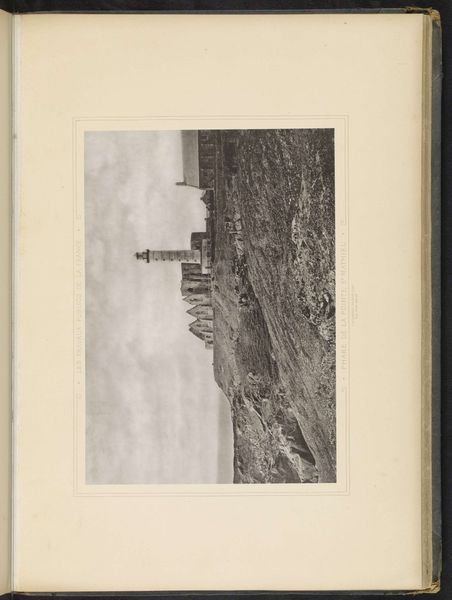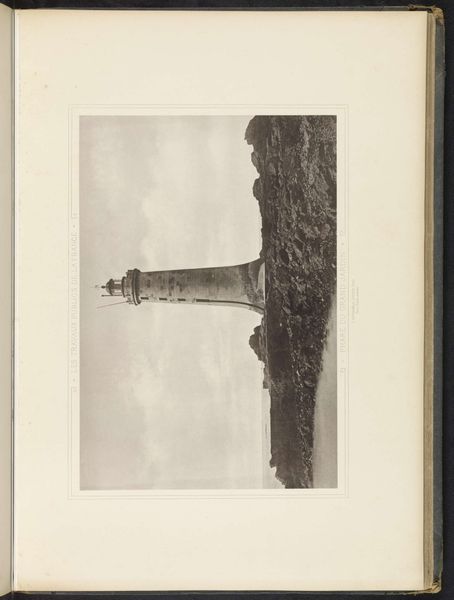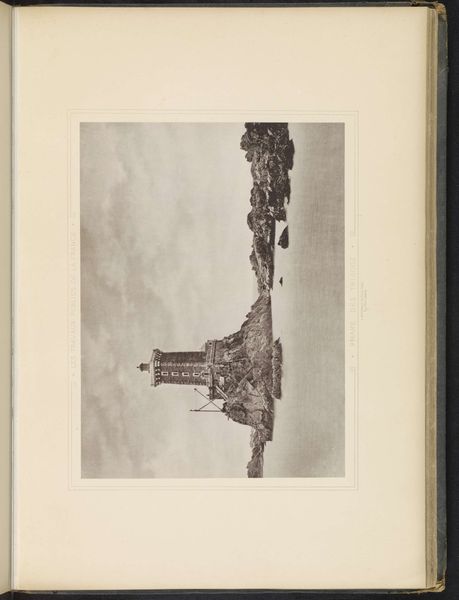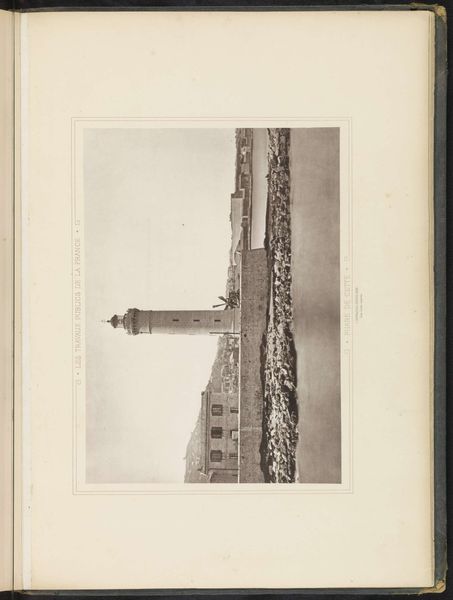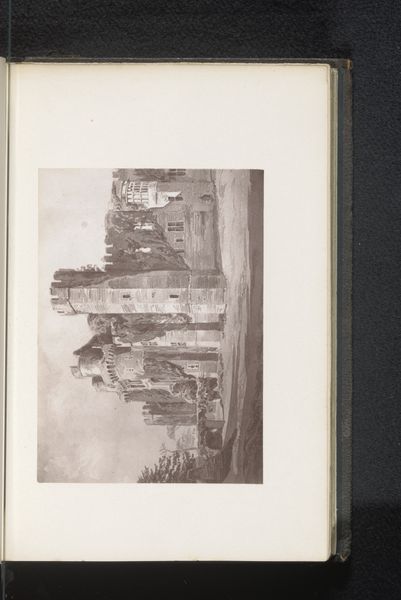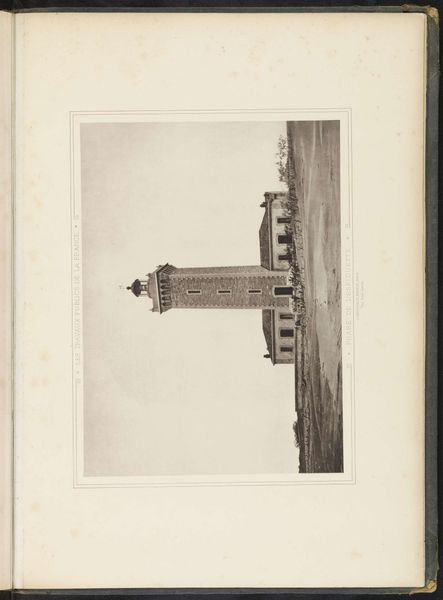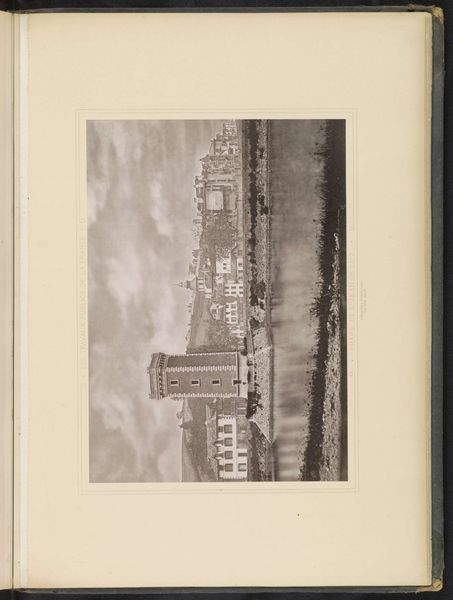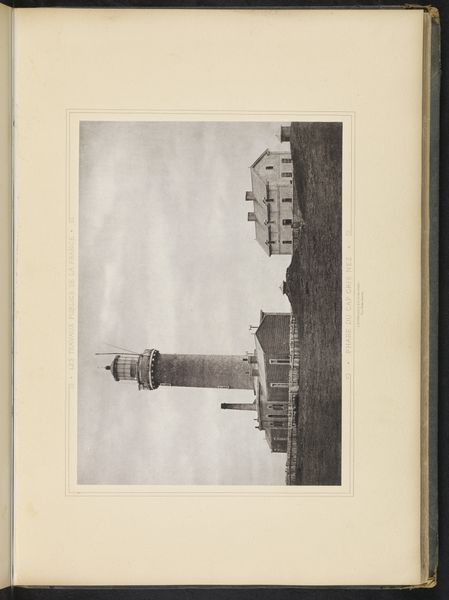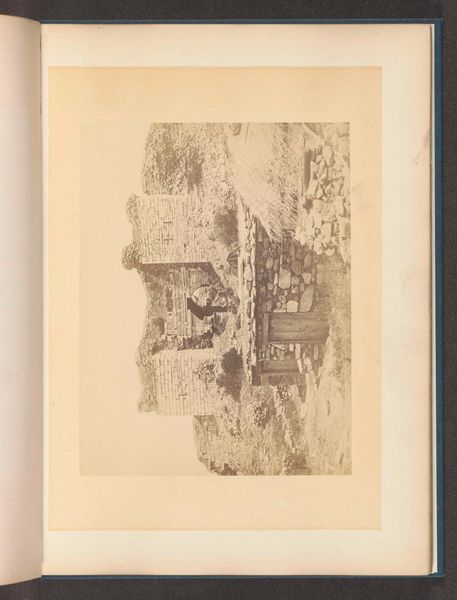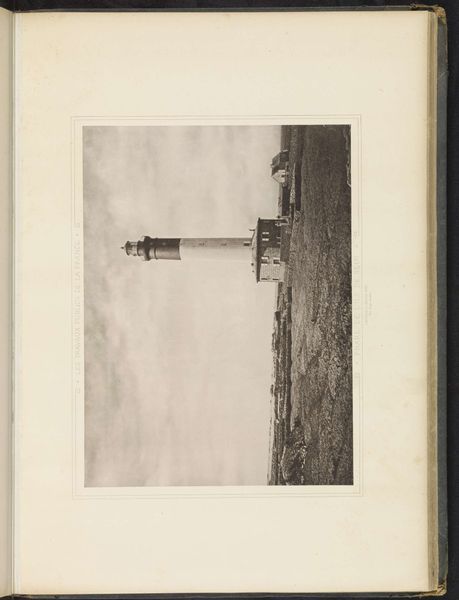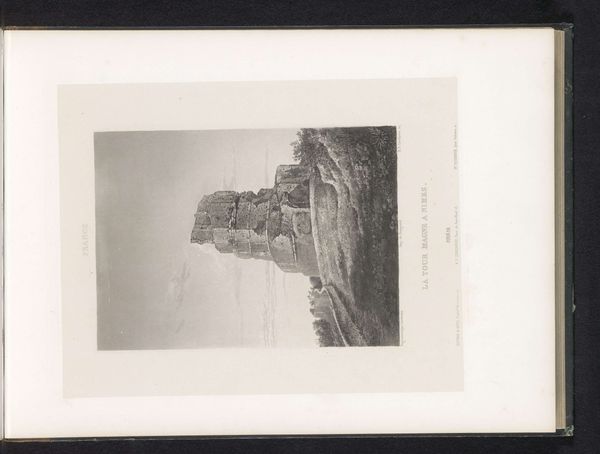
print, photography
# print
#
landscape
#
photography
Dimensions: height 229 mm, width 323 mm
Copyright: Rijks Museum: Open Domain
Curator: Here we have an untitled print from before 1883, simply known as "Vuurtoren van Cap Fréhel." This photogravure depicts the eponymous lighthouse. Editor: Immediately, I'm struck by the starkness. The monochromatic palette lends it a sense of melancholy, almost foreboding. It's like a scene from a 19th-century gothic novel. Curator: Yes, the composition is certainly striking. The way the lighthouse dominates the frame, its verticality emphasized against the relatively low horizon, creates a clear visual hierarchy. One is immediately drawn upwards to that point of light. Editor: But what does that light signify? Lighthouses, historically, aren't neutral structures. They are symbols of safety, guidance, and perhaps even empire. Built environments like this often served the interests of colonialism, securing trade routes, facilitating the exploitation of natural resources in this territory. It wasn’t so straightforward in terms of its purported beneficence to all. Curator: I can see that perspective, certainly. Though formally, the layering is particularly interesting. Note how the artist balances the textured foreground—perhaps showing the rugged coastline of Cap Fréhel —with the smooth gradation of the sky. The structure of the building mimics the stone upon which it rests. The image uses contrasts in texture to establish space and depth. Editor: And that contrast is essential, socially. Think about who had access to those landscapes versus who labored on and around them, or even was migrating across seas. The lighthouse as an instrument is loaded and complex—who benefits from its light and at what cost? I find myself wanting to excavate this deeper in that setting. Curator: A fair point. But I'm intrigued by the play of light. It dances across the stones, giving them a vibrant quality, contradicting the image’s overall sombre feeling. It reveals the artistry inherent in this rather subdued photograph. The materiality gives the form an undeniable impact. Editor: The artist, though unnamed to us, makes palpable some rather relevant power dynamics regarding territory, navigation, and who controls the gaze of observation. It shows us just how something meant to provide safety could be used as a tool of control. Curator: I suppose this artwork serves as a powerful lens through which to examine structures of visibility, literal and metaphoric. Editor: Indeed. It asks us to consider the relationship between light, landscape, and labor, and the narratives that these seemingly innocuous images often obscure.
Comments
No comments
Be the first to comment and join the conversation on the ultimate creative platform.
